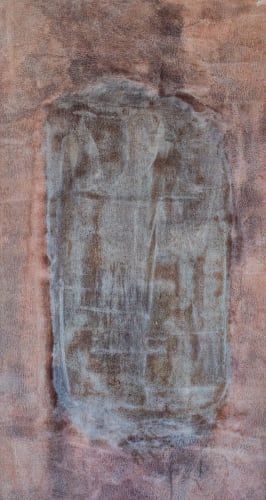Sherron Francis is a significant voice in the great reflowering of abstraction in the 1970s. With the other painters in this second generation of the New York School, she effected a departure from the hard-edged geometry of post painterly abstraction of her era, instead revisiting gestural abstraction through the lens of color field painting. The result was something similar to what the pioneers of the fifties had wrought, but configured differently, like the compositional echo of an earlier musical refrain.
It was a return, however, that failed to gain her the broad recognition she deserved. Despite working as a close member of this new painterly school, and despite drawing accolades from none other than Peter Schjeldahl, she ultimately abandoned painting to deal in antiques. We are now witnessing what some are calling her rediscovery. The depth, seriousness, and ultimate importance of Francis’ work are incontrovertible, and now, some thirty-seven years after she abandoned it, we have the privilege of seeing her canvases again.
This current retrospective addresses paintings she made during the seventies. In this decade she began with ethereal and luminous surfaces stained with washes of color, then moved onto more robust and warm works saturated with bright and arresting hues, to her final thick impasto canvases where added elements, even gravel, add textural heft and weight. Ever restless and experimental, we can see through her shifts in technique and application that Francis was never satisfied, seeking continuously to push the painting medium in novel ways.
However restless her technique, she has always had an unmistakeable voice. Francis’ canvases have a translucentquality, an iridescence not unlike the shine on an abalone shell. With their ethereal, some would say mystical qualities, she harkens back to the origins of spiritual abstraction as conceived by Vassily Kandinsky. There is a glow to Sherron’s painting that continuously hints at the transcendent. Her abstraction is marked by her restless investigation into the ontology of presence, to a depth probably not seen since Rothko.
There is argumentation in it, too. One of the earliest works, “Titled Out’, from 1973, shows her scraping away paint rather than applying it. Francis, who began her career doing male figure studies, is still devoted to the palpable presence of a figure in her work, in this case an amorphous negative space at the center. In this case she appears to be stripping away the human form down it’s negative essence and situating it in the heart of the picture. It's still there, in other words, but its presence is ghostly, internally troubled by wisps and traces of bluish grey at the center. Questioning what to do with this absence, she sets it all against a field of muddy rose.
There are also moments of immersive serenity. The long, narrow ‘Sonic Lark’, from 1974, has a soft edged rectangle sinking slowly to the bottom of a sea of opaque blues. Closer examination shows an incredibly subtle gradation of crepuscular aquamarines, pinks, shades of cerulean and bluish grey. This is largely due to what seems to be an underpainting in pink and purple then overlayed by layer upon layer of blue. On the whole, however, it simply shimmers with contemplative presence.
This gives way to vibrancy and boldness by the middle of the decade. Her untitled canvas of 1975 fairly ignites the air with its central field of crimson and red. Looking closer we can see it consists of several washes or pourings, successive stains that only bring out the cloud of bright green peeking from behind it. It all reposes on a bed of peach which is then nestled upon a peaceable field of bluish grey, a figure ground relationship that consists of several nested layers of color. The vermillion surface is cooled somewhat by washes of white, which does nothing to diminish its impact. Not exactly gestural, and not exactly color field, but once again stamping the presence of a central figure into the mind of the viewer. Aside from packing as much unabashed visual pleasure as possible, we have something that is, as stated before, a reference to earlier abstract expressionism, modulated into something else.
Francis’ turn away from this luminosity to earthier colors, textures and surfaces is unexpected but no less compelling. Francis becomes engaged with the almost sculptural presence of impasto, especially when contrasted with her earlier fascination with stained and washed surfaces. The weight and physicality of paint becomes a new sounding note against the attenuated fields of stained color, as in her untitled canvas of 1976, which is a trialogue between two blobs of thick ochre and black with a larger underlying field of bluish grey.
Francis delves deeper into this navy darkness bordering on black with ‘Noble O.” from 1976, where the surface has become so thick as to dry and reveal fault like cracks in the surface. The same washes of color now give way to actual lava plains of acrylic. It’s as if she has discovered yet another way texture, color and surface can be interpellated.
There are speculations as to why the understanding and appreciation of Francis’ art languished while the work of her peers- among them Olitsky and Poons- gained traction. There is no doubt about their visual power, an almost overwhelming and instinctive response that overtakes the viewer at first glance. Her canvases are paens to color and visual pleasure, and their luminosity, arriving at a time still marked by minimal rigor andausterity, might have led them to be dismissed as too beautiful to be taken seriously.
Further time spent with them, however, especially at the remove of several decades, show a rigorous and formal engagement that only reinforces and ratifies their initial impact. Francis is a significant painter, and we are lucky to have found her again.

